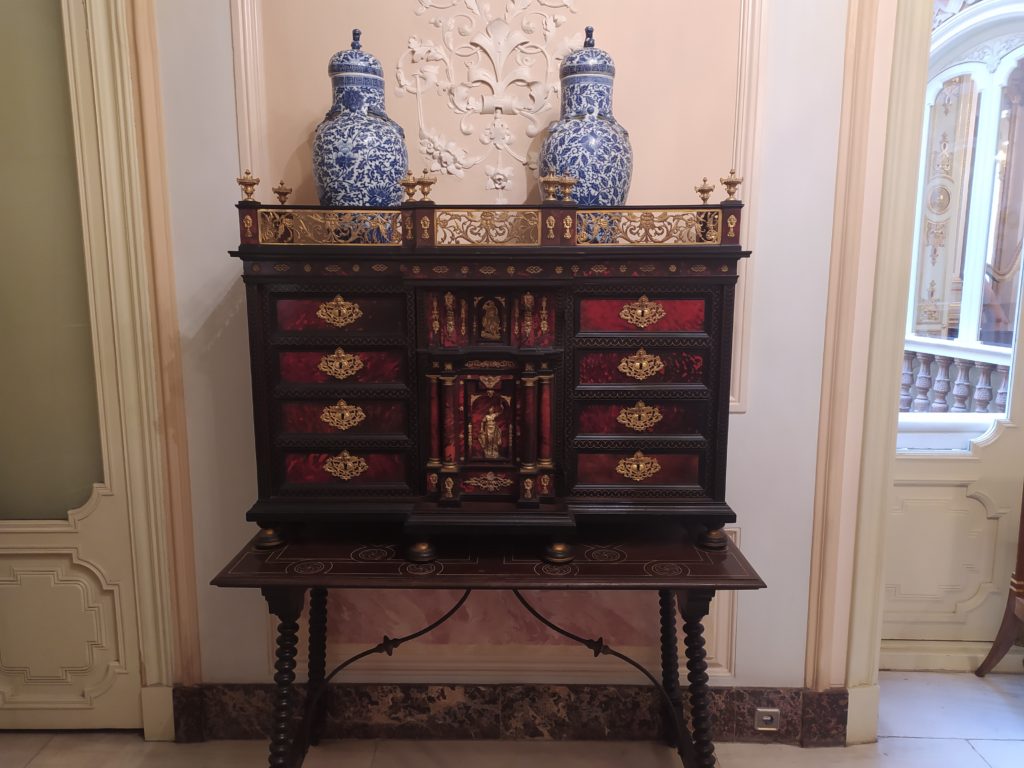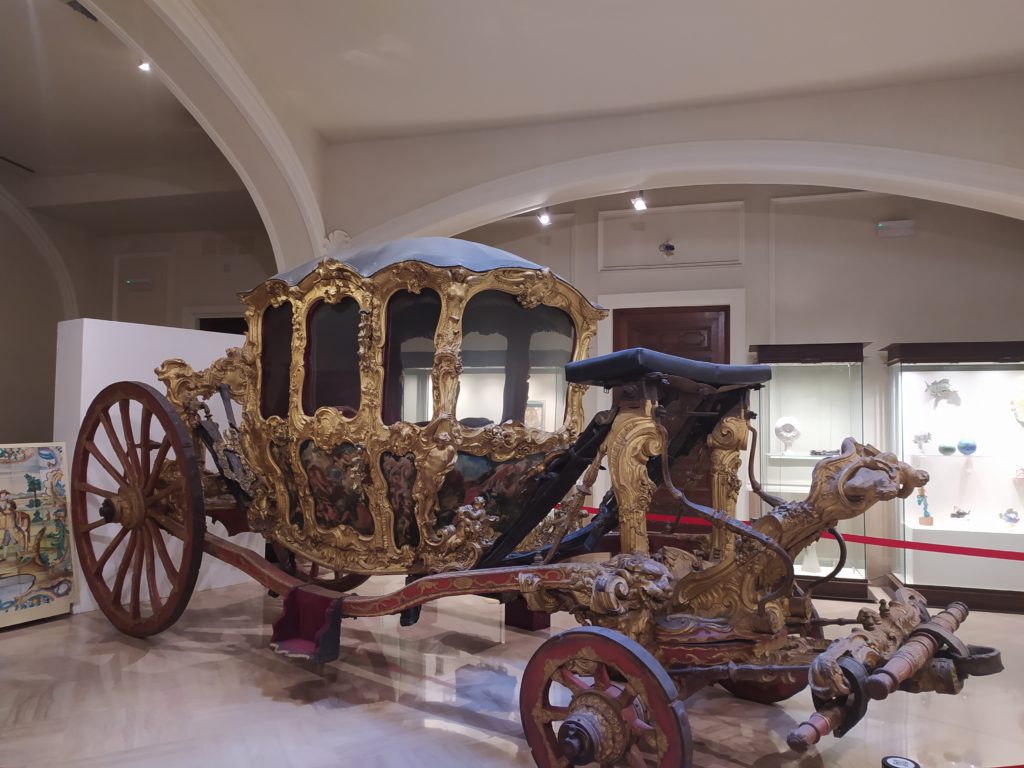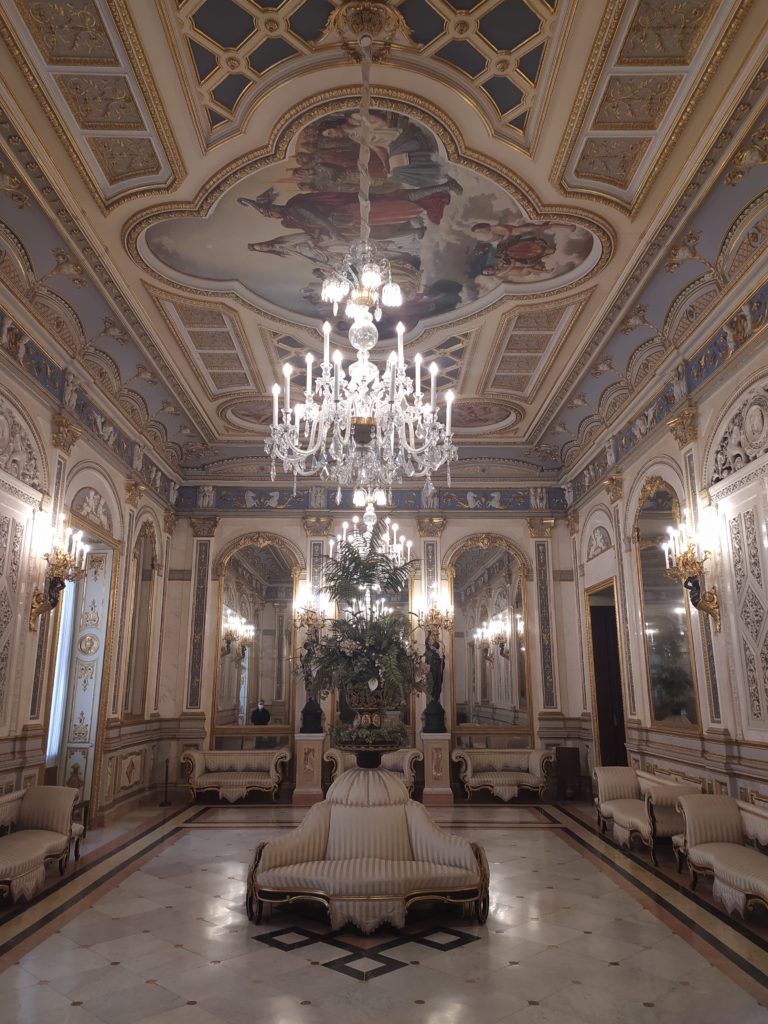Claudia Jackson had always been a little meh about the prospect of visiting the Ceramics Museum in Valencia until learning that it is free admission until the end of the month, she decided to give it a go. She’s glad she did…

I have walked past the Ceramics Museum in Valencia many times on my way somewhere else. Usually stopping, like most people, to gaze in awe at the elaborate alabaster façade that frames the museum entrance before continuing on my way. If, like me, the name stirs up rumblings of inner protest – how interesting can ceramics really be, right? – then you are in for a pleasant surprise.
The elaborate former palace that is the Gonzales Marti National Museum of Ceramics and Sumptuary Arts, began its life back in the 15th century, as the Gothic-style Palacio de la Marques de Dos Aquas, before a refurbishment in 1740 to a rococo style. It became a museum in 1947 following the donation of the ceramics collection of Valencian artist and scholar, Manuel González Martí. In addition to the original ceramics collection, the museum is now home to a unique array of original furniture, paintings, sculptures, and decorative art spanning centuries and cultures.
Firstly, the enthralling entrance that has passers-by reaching for their phones to take a photo, was designed by Valencian painter and engraver Hipólito Rovira. It was then carved in alabaster by sculptor Ignacio Vergara. It depicts the two main rivers of the Valencian region (The Turia and Jucar). Which are represented by two naked figures on either side of the doors and gazed down upon by the Virgin of the Rosary.

As fascinating inside as it is out
On the ground floor of the ceramics museum, is the Courtyard of Floats. The original palace courtyard which was home to carriages and animals. Home to the fairy-tale-like Chariot of the Nymphs, (created, like the entrance façade by Hipólito Rovira and Ignacio Vergara), and the Carriage de Marquis de Llanera, a less elaborate affair with simple design and straight lines that stems from the early part of the 19th century.
Next, a fittingly grand, chandelier-lit staircase leads the way to the original private rooms of the palace. Lavishly decorated from the tiled floors and original furnishings to the exquisitely painted ceilings. Every item is full of minute detail. Tiny birds perch on chandeliers. Cherubs lounge on gilded clocks and flowers and painted seashells adorn a pair of decorative urns. Surprisingly, I didn’t expect this from a ceramics museum.

The second floor is all about ceramics. Laid out in chronological order with Neolithic, Greek, Iberian, Roman, and Arab, as well as contemporary works such as Picasso. In their glass cases, the simple clay cups and cracked bowls and plates tell a story. One just as powerful as the palatial decadence of the floor below.
Whether you’re a history buff, an art enthusiast, or just looking for an inexpensive way to while away a couple of hours, the ceramics museum is as fascinating inside as it is out. Without doubt, it’s a true hidden gem in Valencia that will not disappoint.
Entrance to the ceramics museum is free until 31st October.
Opening hours
Tuesday to Saturday 10:00-14:00 / 16:00-20:00; Sundays 10:00-14:00;Calle Poeta Querol 2, Valencia 46003;
You can visit their website here.
Keep up-to-date with what’s happening in the Valencian art scene here.
